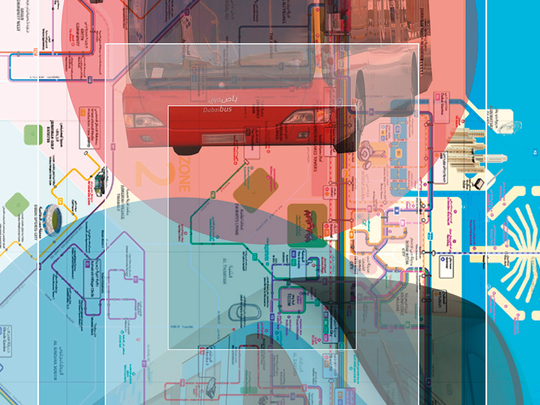
The recent inaugural Emirati-French Business Engagement Summit brought together experts from the UAE and French public and private sectors with the savoir faire you would expect from global leaders in their fields. I had the privilege of addressing the conference as a keynote speaker.
It was exciting to be here in Dubai because it is the world’s most ambitious “smart city” project, unique in scale and speed of development. Dubai is at the epicentre of a future vision of urban development, embracing innovation in all its forms to create a global leadership position among the most successful cities.
Dubai has already emerged as a global hub sitting at the intersection of urban development, technology, data and mobility. Its success is very apparent; from the establishment of RTA in 2006 to the way it increased the overall share of public transport from 6 per cent to 16, thanks to its advanced and integrated network and services, and has already deployed 29 smart mobility related initiatives.
The global context is vital for Dubai. We are all aware of the macro forces with strong population growth and rapid urbanisation, digital transformation, environmental and financial sustainability concerns. Cities, mobility and passenger expectations are changing. This demands constant innovation.
* Innovating in mobility technology and the impact of automation
Automated transport systems represent the future of transport ... and one exciting area is the fully autonomous vehicle.
* Innovating the passenger experience
Passenger needs and expectations are changing fast and the key is to understand and respond with new on-demand services.
* Innovating the start-up ecosystem
No one has a monopoly on innovation today and we need to partner with the start-up ecosystem. The Dubai smart city accelerator is a great example of this.
* Innovating around data
Smarter cities are an opportunity to shape and build these new urban environments on the platforms of high-speed connectivity. This is driving Big Data analytics to model operational information and passenger movements to achieve optimum efficiency in tram services, for example.
But it’s not only innovation in mobility and technology that is changing public transport.
Cities are complex and fast-changing places and transport networks must keep pace. Transport investment is not short term but for the entire operational life of a project which may be 30-40 years. Partnerships and financing must take this longer term view with innovative funding options, partnerships and business models.
The development of new transport infrastructure has traditionally been the responsibility of governments and public sector agencies, but this is changing. The scale of investment needed for very ambitious and fast-growing urban environments means that a wide range of projects is emerging for long-term private investors, including build-own-and-operate models.
We are also seeing use cases where urban planning is closely coordinated not just with the transportation network but also with the financing of associated property development, both residential and commercial. These “transit-orientated developments” will play a key role in any effectively designed transport infrastructure and we see this in Dubai with the development of Dubai South, for example.
Beyond and underpinning the physical and digital infrastructure, we believe there are three key factors in ensuring sustainable infrastructure development and its financing. Urban planning with mass-transit transportation solutions will be the backbone of the world’s mega-cities.
Enhancing and encouraging the development of local eco-systems that will ensure the sustainability of new infrastructures on a long-term basis is essential. Designing the infrastructure to optimise the investment upfront, but also taking into account the optimisation of the life cycle costs of the infrastructure is critical.
Our unique expertise in optimising overall systems in Paris, for more than 100 years, has enabled us to extend dramatically the life cycle of the assets, to modernise them and therefore to optimise the overall system.
Generally, stand-alone greenfield transportation infrastructure is not justifiable from a purely financial stand point. However, the overall impact on the development of the city may fully justify the investment, both from an economic standpoint and GDP impact. And from an environmental perspective with the reduction of emissions.
This can only be achieved through a collaborative ecosystem with the public transport authority, operator and funding partners, and the start-ups all working together to address the challenges of urban mobility.
We believe in the future of Dubai and in its inspiring capacity to innovate and create the happiest city on earth.
Dubai and the RTA have put all the ingredients in place to pursue its smart city and smart mobility road map — the compelling vision, streamlined decision-making, timely project execution and coordinated action — to deliver sustainable smart mobility, and to lead the Smart Dubai initiative.
With its long term vision, I believe that in Dubai we are already starting to see the future of mass transit for the 21st century.
The writer is Chairwoman of the Executive Board, RATP Dev, the international subsidiary of RATP Group, France’s state-owned public transport operator.












